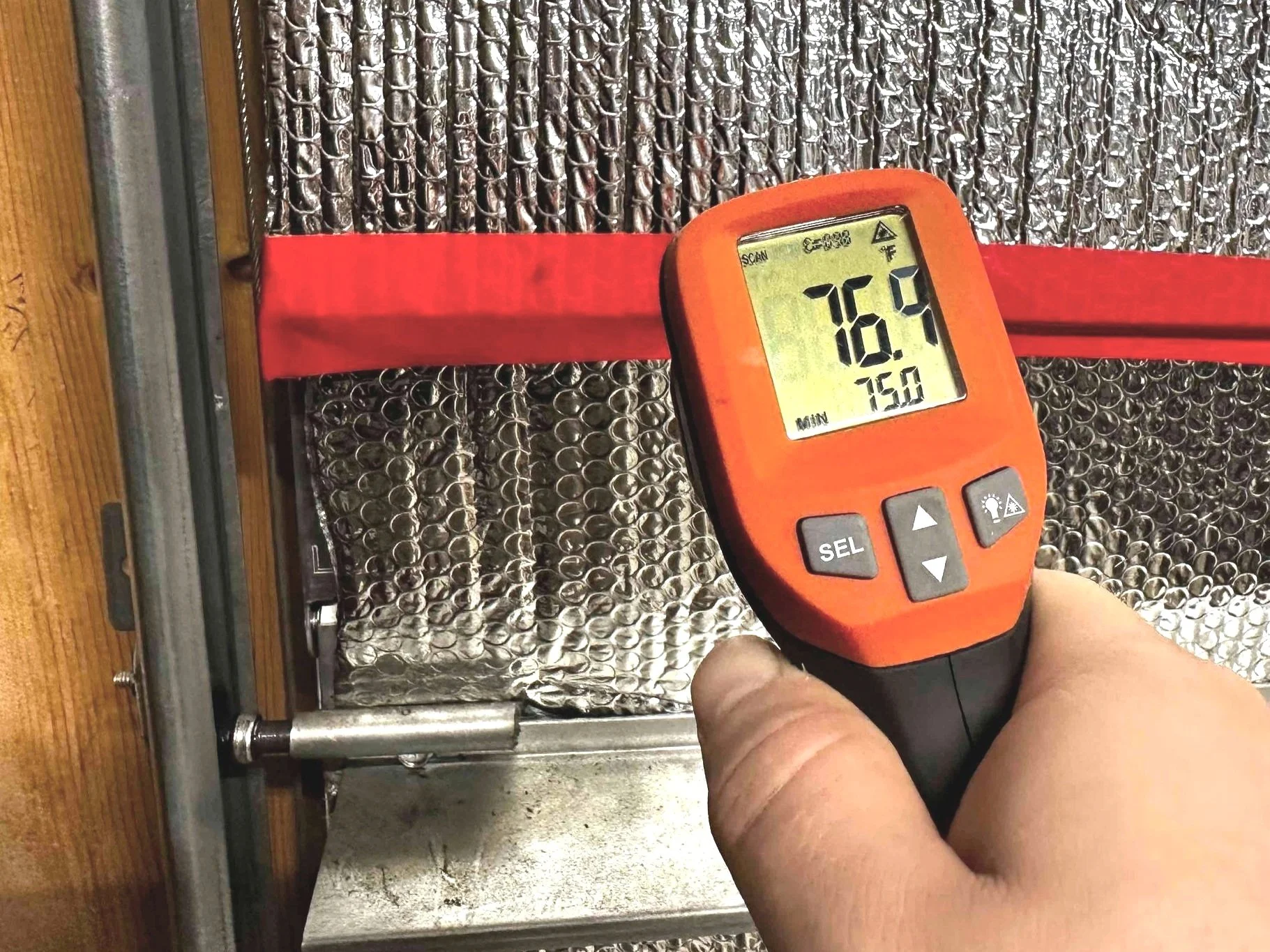IS IT WORTH TO INSULATE A GARAGE?
We’re always working in our unfinished detached garage, but in the summer it gets way too hot.
PARTS LIST
Here’s all the parts and tools you’ll need to cool your garage:
BEAT THE HEAT
Reflectix Mounted to Garage Door Temp Check
We previously installed Reflectix in the attic ceiling, so we decided to see how well the Reflectix would work on the garage door. We didn’t want to tape the Reflectix to the door, so we removed the support struts and placed two rolls of Reflectix directly onto the face of the door.
Reflectix does recommends having an air barrier between the surface and the Reflectix and the great thing was we ended up having a one inch gap.
Then we mounted and screwed the support struts back in place which held the Reflectix up without having to use any sticky tape. After testing a few spots with our infrared thermometer, the heat was way lower. The temperature reading was about 10-15 degrees less with the Reflectix compared to without it. We also tested the garage door opener signal and it continued to work just fine.
Pink R13 Faced Insulation Mounted between 2x4 wall space
Next up was the walls. Our garage came unfinished, just siding and 2x4. We originally wanted to go with spray foam, but paying someone else to do it would be too expensive. The local hardware store did have a foam spray kit, but for about 5-6 of the kits which is what we would have needed cost around a thousand dollars. Also if you’re not careful spray foam can be very dangerous to work with.
So we opted for some good old low cost fiber glass insulation. We got the highest R value that would fit into wall cavity along with the paper vapor barrier. It was about $230 or so for all the wall insulation, but we needed to cover a few more areas.
Pink R19 Faced Insulation Mounted to Garage Ceiling
The garage ceiling is only half covered with plywood which provided some flooring for storage attic space, but the remaining attic was opened to the garage. Even though the previously installed Reflectix helped cool down the attic, there was still lots of heat flowing around the attic.
The ceiling joists are 2x6, so we decided to fill the 2x6 rafters with fiber glass insulation too. The R value we could place in the ceiling was a bit better than the walls, so fingers crossed we’d be able to maintain some of the night time colder air.
THE FINAL STEP
Portable Air Conditioner Installed in Garage
Once we had the wall and ceiling insulation installed, we performed another test the next morning. Everything felt nice and cool, but the real test would be in the afternoon.
At 2pm we walked into the garage and instantly felt how much cooler it was.
The temperature difference between the insulated space and just above the attic space was about a 20 degrees difference.
As the day lingered on, the garage slowly warmed up. Eventually the temp equalized to the outside temp, but it took much much longer than without the improvements.
So we ended up finding a 13,500 BTU portable air conditioner on sale at Lowes for $389. The unit came with a hose and a section of PVC material to connect the ventilation hose out a window. You can find a similar portable air conditioner here from Amazon too.
Unfortunately we didn’t have any windows in the garage, so we cut a 10 inch circular hole in the side of the garage and installed a flapper.
With the portable air conditioning unit the garage stayed around 75 degrees or so when the temp was 90+ degrees outside.






